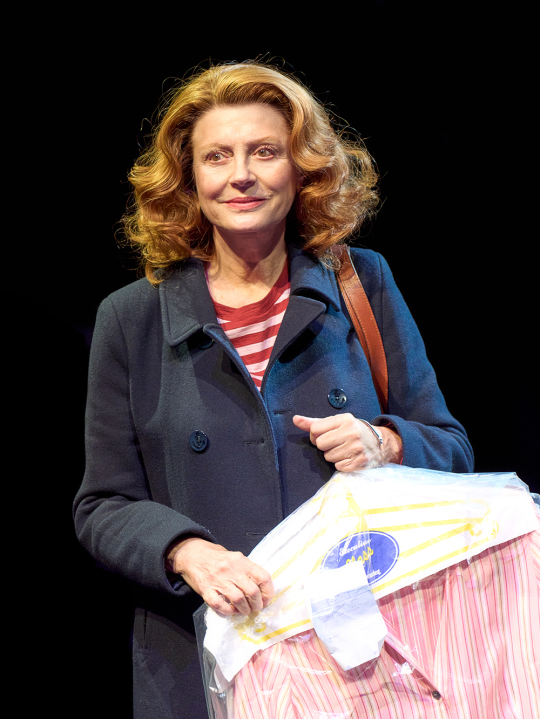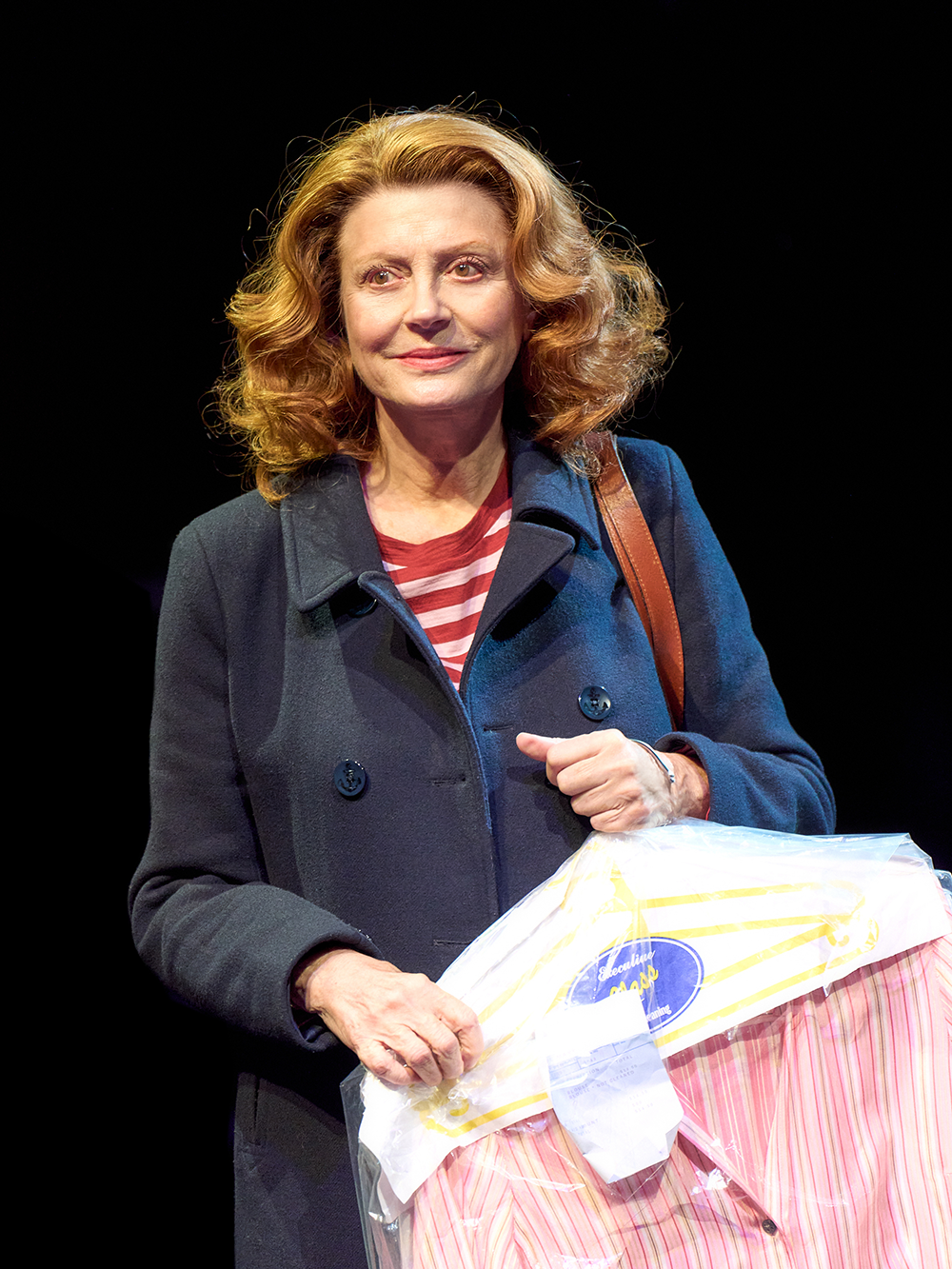
Tracy Letts’s Mary Page Marlowe is a biographical portrait of an emotionally damaged mother struggling with romantic and family problems. Susan Sarandon shares the lead with four other actresses which makes the show a little hard to follow. And the timeline is jumbled up so that the audience has to find its bearings at the start of each new episode. Why? Perhaps to give the material a complexity it doesn’t deserve.
We first meet our heroine, aged 40 (played by Andrea Riseborough), as she tells her kids that they’re moving to Kentucky without their dad. This unpromising scene is hilarious because the word ‘Kentucky’ is repeated so often that it becomes a profanity. Pinter loved verbal games like this.
Next, we leap back to the 1960s and a Tarot reading where Mary and her hippy friends discuss the death card. Does it foretell disaster or might it suggest exciting new adventures? Quite a funny scene. Then the show flatlines for a bit as Mary meets her shrink and gets stuck in a horrible marriage with a drunken screaming thug whose best friend is a call girl.
These moments are ugly and dispiriting. The show is already half over but we still haven’t seen Susan Sarandon. Oh here she is. A death scene. Mary, aged 69, reclines in a hospital bed and trades amusing observations with a nurse. She likens her family to the Kennedys ‘but without the children, the money or the power’. Sarandon is convincing as a mellow old dear with a grey wig and ashen cheeks but it’s not terribly hard to get a death scene right. You don’t need to hit your mark, raise your voice, handle props, perform sudden movements or display large shifts of mood or attitude. Just croak out your lines and smile wanly.
After this, we skip back 12 years and meet Sarandon, aged 57, as she flirts with a handsome boy in a shop. She wants to seduce him but he’s too young. Oh well. She leaves the shop without nailing her quarry. Poignant but rather uneventful. Too much subtlety kills the play at certain moments. And Sarandon misses the big excitements of Mary’s life. She marries three times, usually to the wrong man, and she spends most of her afternoons supping strong liquor. Aged 50, she prangs her car and gets two years for driving under the influence. Riseborough returns for this scene and she plays the part perfectly well but, as before, Mary just hangs around on stage and mopes about her problems.
Sarandon is convincing but it’s not terribly hard to get a death scene right
We scroll back to the 1970s and watch as she seduces her handsome and charming boss who seems ready to fall in love with her. She rejects him because she wants to sleep around with other men who want to sleep around. Mary, to be blunt, is a drunken sex-addicted narcissist who makes stupid and self-destructive choices throughout her life. And yet the writer, Tracy Letts, has a magic touch and he manages to turn this ant-brained loser into a warm and intriguing character. The closing scenes contain a huge surprise which feels like a cheap way to reward the audience for paying attention. Not a bad night out, not a great one.
Blessings is a period piece set in 1969. The Deacon family are ardent Catholics living in a suburb of London. The house is very crowded. So is the play. Not enough performers for the script. Gary Webster doubles as Frank, the boozy patriarch, and as Father O’Brien the charming parish priest who seems overly interested in his female worshippers. ‘Be curious,’ he tells the teenage Sal during a private consultation in the deserted church. His most ardent fan is the saintly matriarch, Dorie, who attends Mass every day. But are her visits purely devotional? At home, Sal snoops on Dorie as she holds furtive conversations with a mystery caller on the phone.
The production’s most impressive feature is the décor
In the days before mobiles, private phone conversations were almost impossible because each home shared a single line. When it rings, Dorie observes the correct etiquette. She stands to attention and greets the caller with her name and the phone number (omitting the area dialling code). ‘Hello. Four, eight, six, eight. Mrs Deacon speaking. How can I help you?’ That’s how phones were answered back then. Sal is desperate to snoop on Dorie and Dorie is equally keen to monitor Sal’s trysts with her wealthy boyfriend, Peter, who has just bought a Vauxhall Viva to impress the ladies. Sal has three siblings, including a pregnant sister, to add to the family’s problems.
This complicated show speeds up very suddenly in the closing scene when a huge secret is disclosed. Too much, too late. The production’s most impressive feature is the décor. The furniture is mostly antique with one modern sofa and a costly stereo system, prominently located. Excellent visuals.









Comments